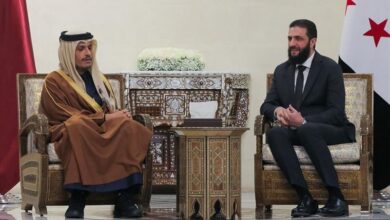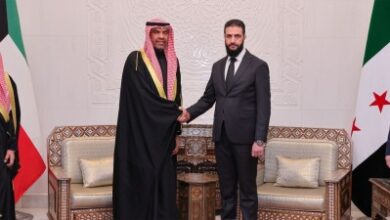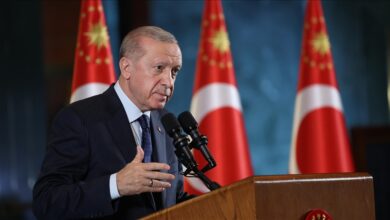
Forming a civilian gathering in “Al-Rukban” camp to follow up on the situation of the displaced and to communicate with humanitarian organizations
Yesterday, civil activities in the besieged al-Rukban camp on the Syrian-Jordanian border formed a “civil gathering of the youth of Palmyra in the camp,” with the aim of following up on the conditions of the city’s residents living within the camp, especially with the deteriorating humanitarian conditions of the displaced.
The new formation is considered a “civilian body” that will work to assess the conditions of the displaced inside the camp and provide what can be provided to them, in light of the great scarcity of humanitarian aid provided by the United Nations as a result of the siege imposed on it by the forces of the Assad regime and Russia, according to what the members of the assembly published via Social media.
The “grouping” consists of several offices, including the offices of women and children, education, health, relief coordination, civil status and the media. The “gathering” is not affiliated with any political or military authority, not even the tribal councils, according to the “grouping” statement.
The displaced people in the camp are living in difficult humanitarian conditions under the siege, the lack of humanitarian and medical services, water, and the lack of electricity. In a statement, the Palmyra and Syrian Badia Tribes Council had previously called on humanitarian organizations and the United Nations to assume their responsibilities towards the camp’s displaced and the “55” area under the control of factions from opposition.
In its statement addressed to the Secretary-General of the United Nations and to the Office for the Coordination of Humanitarian Affairs in the Syrian capital yesterday, the Council called for providing medical and humanitarian assistance without hindrances to the camp’ residents, noting that “exploiting” the situation of the displaced and proposing bartering aid inexchange for the camp’ssufficiency isimmoral.
The camp’s displaced have been suffering since February 2019, from a complete siege imposed by the Assad regime forces, Russia and Iranian militias, in an effort to pressure them to accept the terms of the settlement, especially in light of the closure of all ports and the complete closure of the Jordanian side of the borders, and the camp’s lack of health centers and water.
The number of displaced people inside the camp is estimated at more than 8000 displaced people, and the camp was established in late 2015, after the direct Russian intervention in favor of the Assad regime and its adoption of the policies of forced displacement against civilians in rebellious cities and towns, and the camp is located on the border triangle linking Syria, Jordan and Iraq.




